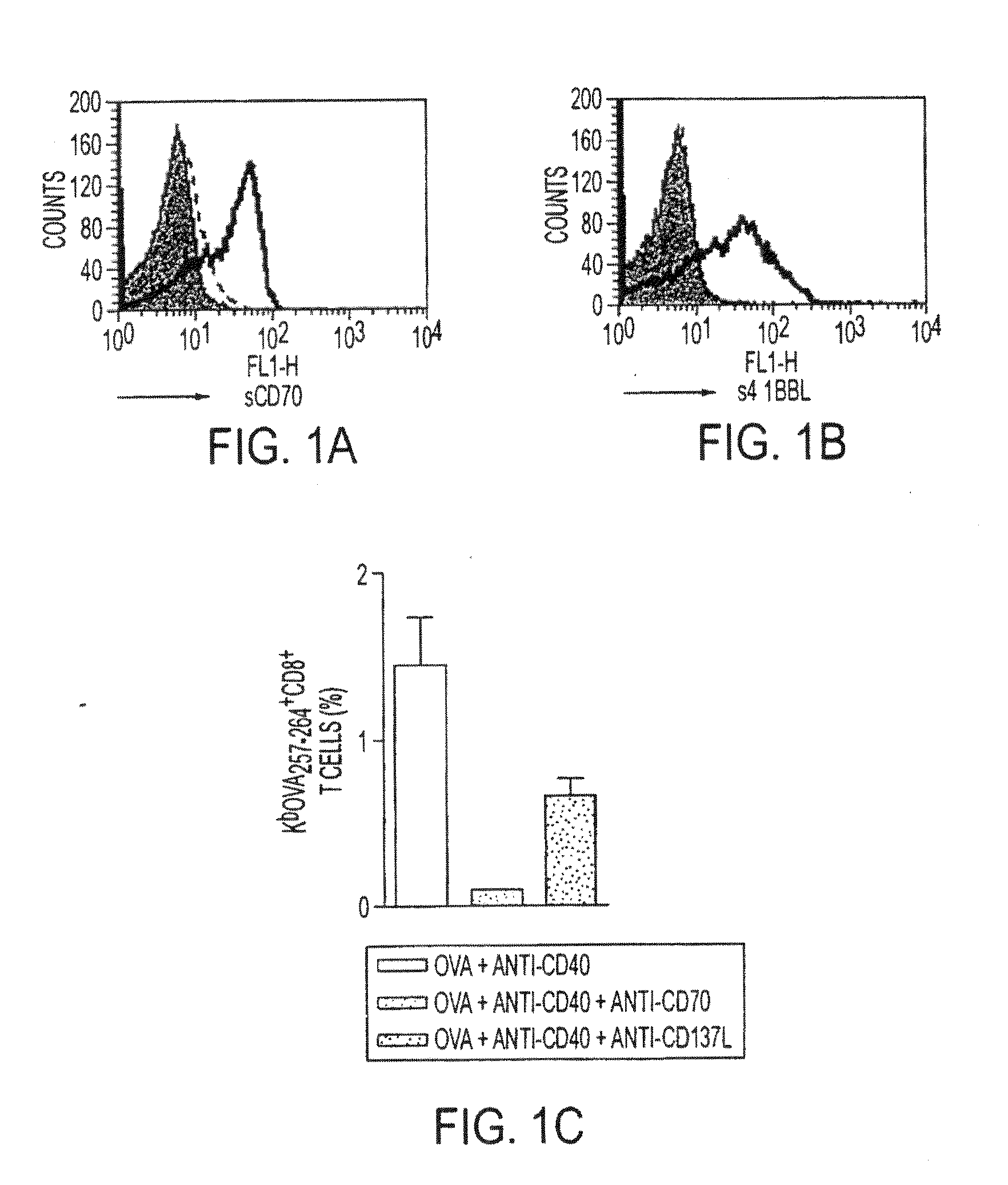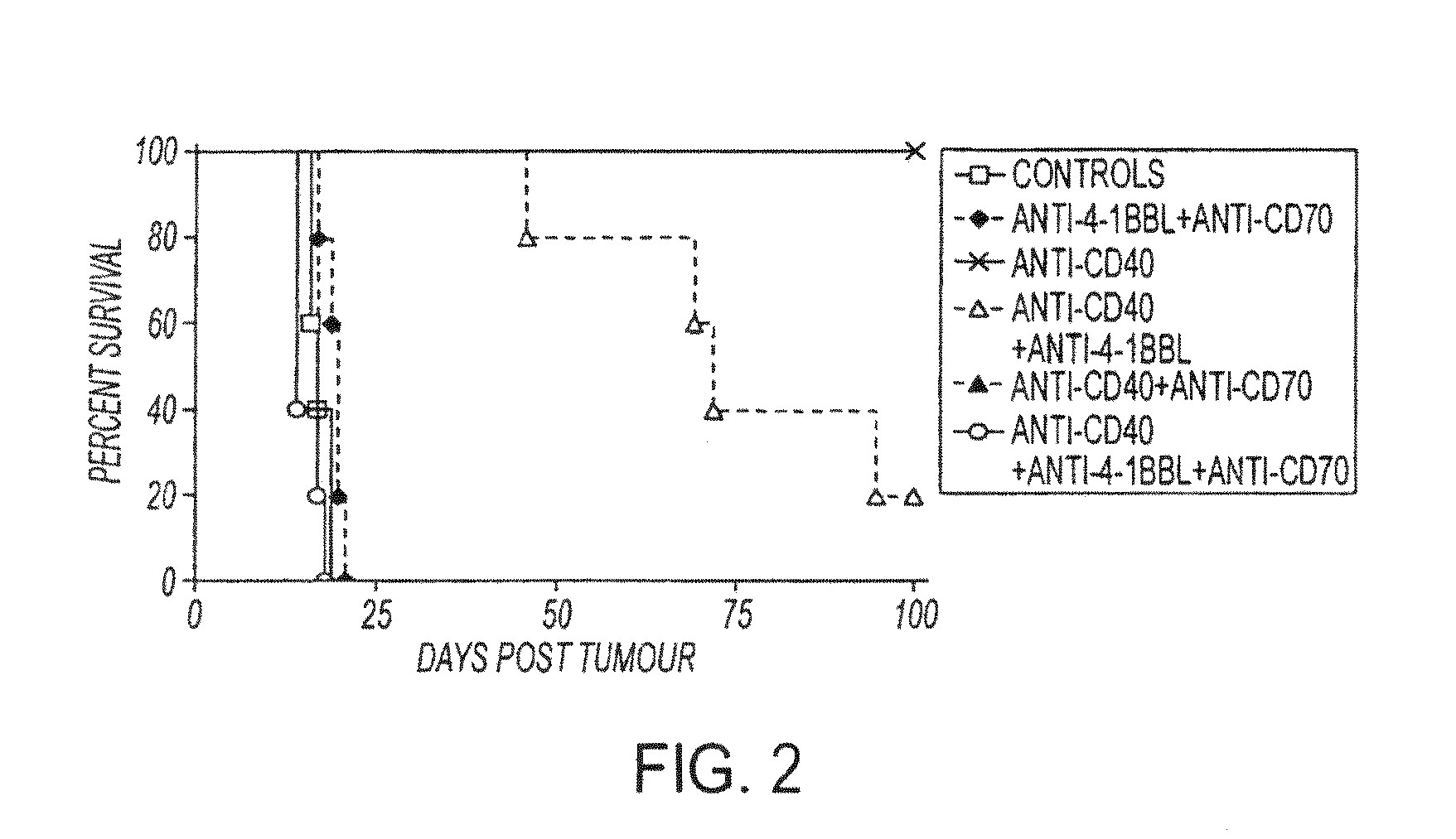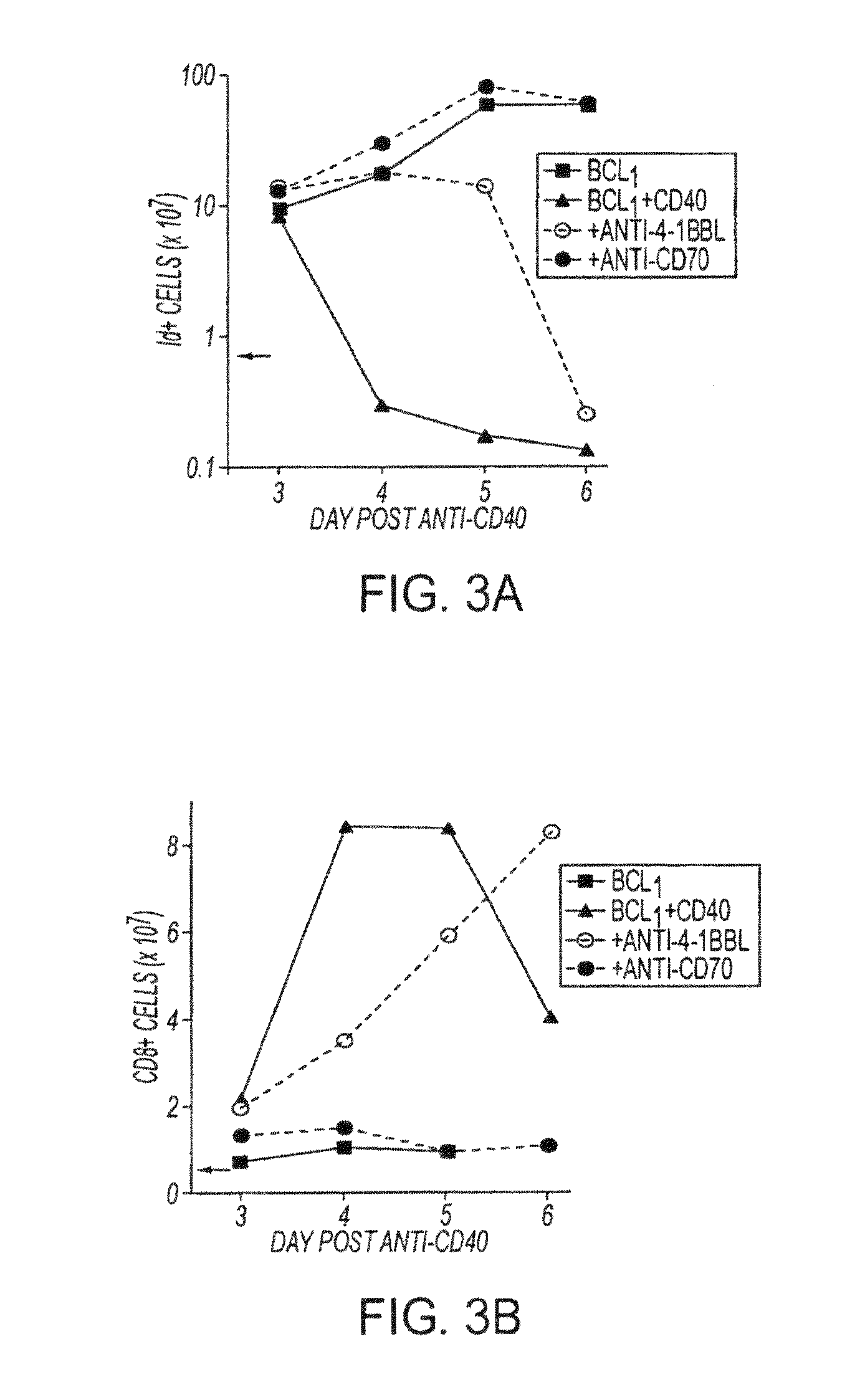Human immune therapies using a cd27 agonist alone or in combination with other immune modulators
a technology of cd27 and agonist, which is applied in the field of cd27 agonist, can solve the problems that cd27 mab did not protect immunocompromised scid mice, and achieve the effects of promoting cd8+ t cell expansion, antigen-specific cd8+ t cell immunity, and promoting anti-tumor immunity
- Summary
- Abstract
- Description
- Claims
- Application Information
AI Technical Summary
Benefits of technology
Problems solved by technology
Method used
Image
Examples
example 1
TAN1-6 (ANTI-CD70) and AT113-2 (Anti-4-1BBL) Block the 4-1BBL / 4-1BB and CD70 / CD27 Interactions Respectively In Vitro and In Vivo
[0083]In this experiment contained in FIG. 1, in both 1a and 1b BALB / c splenocytes were activated for 48 hours with 1 microgram / ml of anti-CD3 to up-regulate the expression of CD70 and 4-1BB on T cells. In 3a, the binding of sCD70-IgFc fusion protein (1.125 micrograms / ml) to the activated splenocytes was detected using the FITC-labeled anti-human Fc mAb (SB2H2, 10 micrograms / ml) in the presence of s4-1BBL-Ig Fc fusion protein (1.125 micrograms / ml) to the cells was detected using the FITC-labeled anti-human Fc mAb SB2H2 in the presence of TAN1-6 (solid line) or AT113-2 (dashed line) (50 micrograms / ml). In both a and 1b the filled histograms show a control of hIgG detected with SB2H2. In 1c, the endogenous Ova-specific CD8 T-cell response in C57Bl / 6 mice was monitored following i.p. administration of OVA (5 mg) and anti-CD40 (1 mg) in combination with either ...
example 2
Effect of Anti-4-1BBL (AT113-2) and Anti-CD70 (TAN1-6) on the Therapeutic Activity of Anti-CD40 in BCL1 Mice
[0084]In this experiment shown in FIG. 2, groups of 5 mice were inoculated iv with 1×107 BCL1 tumor cells o day 0, and treated iv with anti-CD40 on days 4, 5, 6 and 7 post-tumor (500 micrograms per day). Where shown, the groups also received anti-4-1BBL and / or anti-CD70 on days 4, 7, 9 and 11 (500 micrograms / mAb / day, i.p. Mice were monitored for tumor development. These results in FIG. 4 represent and contain the results of one of 3 similar experiments.
example 3
Effect of Anti-4-1BBL and Anti-CD70 on the Accumulation of CD8+ T Cells and the Eradication of BCL1 Tumors after Anti-CD40 mAb Therapy
[0085]In this experiment the results of which are contained in FIG. 3, groups of mice were inoculated with 5×107 BCL1 cells iv and four days later (day 0 in the figure) treated with anti-CD40 mAb, at which point the level of Id+-tumor cells in the spleen was between 3 and 5%. Where indicated, the mice also received anti-4-1BBL and / or anti-CD70 mAb on days 0, 1, and 2 (500 micrograms / mAb / day). On the days indicated, splenic tumor and CD8+ T cells were monitored by flow cytometry as described in the Materials and Methods herein. The experiment in FIG. 3a shows the total number of splenic tumor cells and 3b the total numbers of CD8+ cells after treatment of BCL1. The points are the mean of duplicate animals, and the results shown represent the results of 4 similar experiments.
PUM
 Login to View More
Login to View More Abstract
Description
Claims
Application Information
 Login to View More
Login to View More - R&D
- Intellectual Property
- Life Sciences
- Materials
- Tech Scout
- Unparalleled Data Quality
- Higher Quality Content
- 60% Fewer Hallucinations
Browse by: Latest US Patents, China's latest patents, Technical Efficacy Thesaurus, Application Domain, Technology Topic, Popular Technical Reports.
© 2025 PatSnap. All rights reserved.Legal|Privacy policy|Modern Slavery Act Transparency Statement|Sitemap|About US| Contact US: help@patsnap.com



